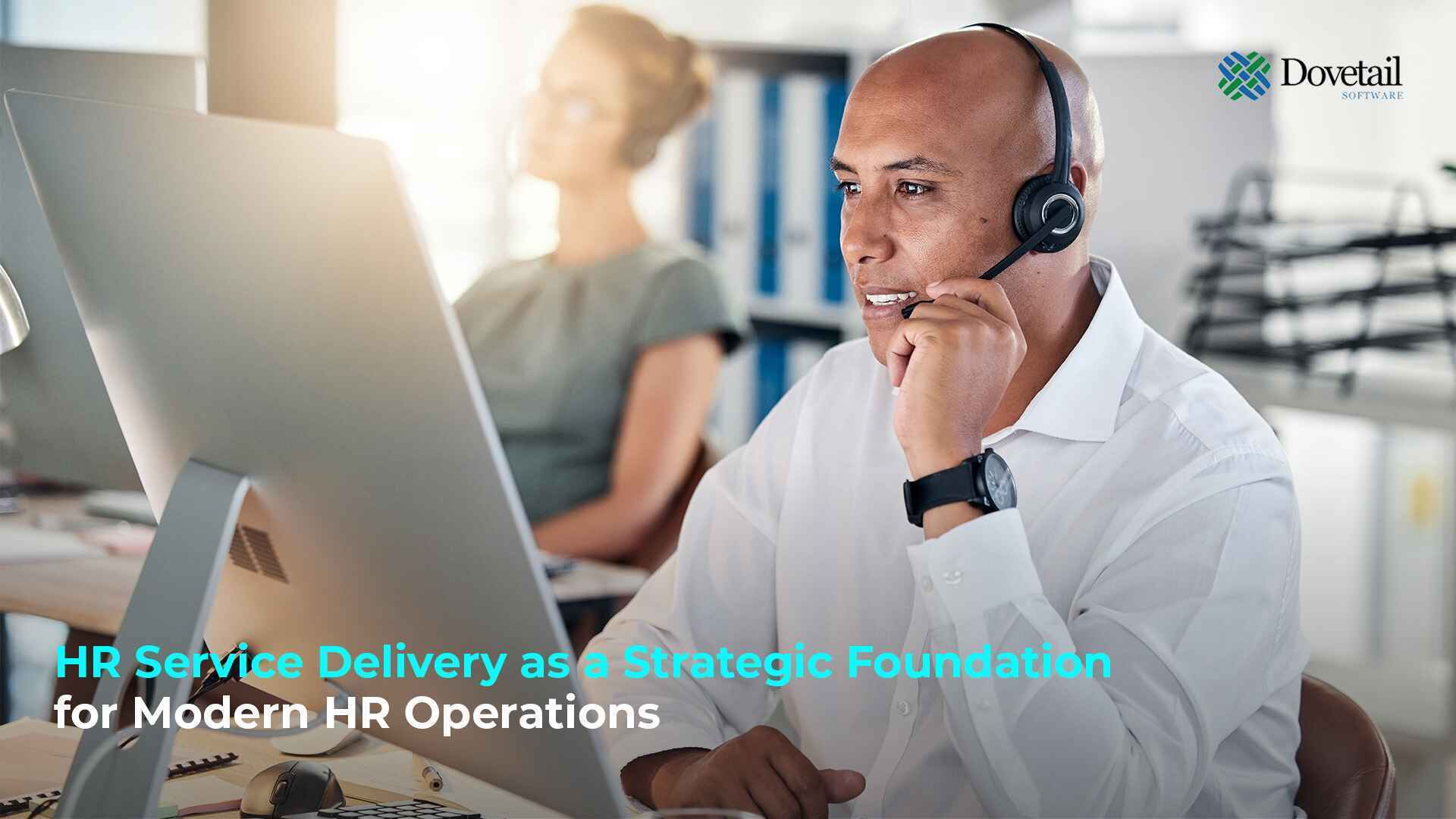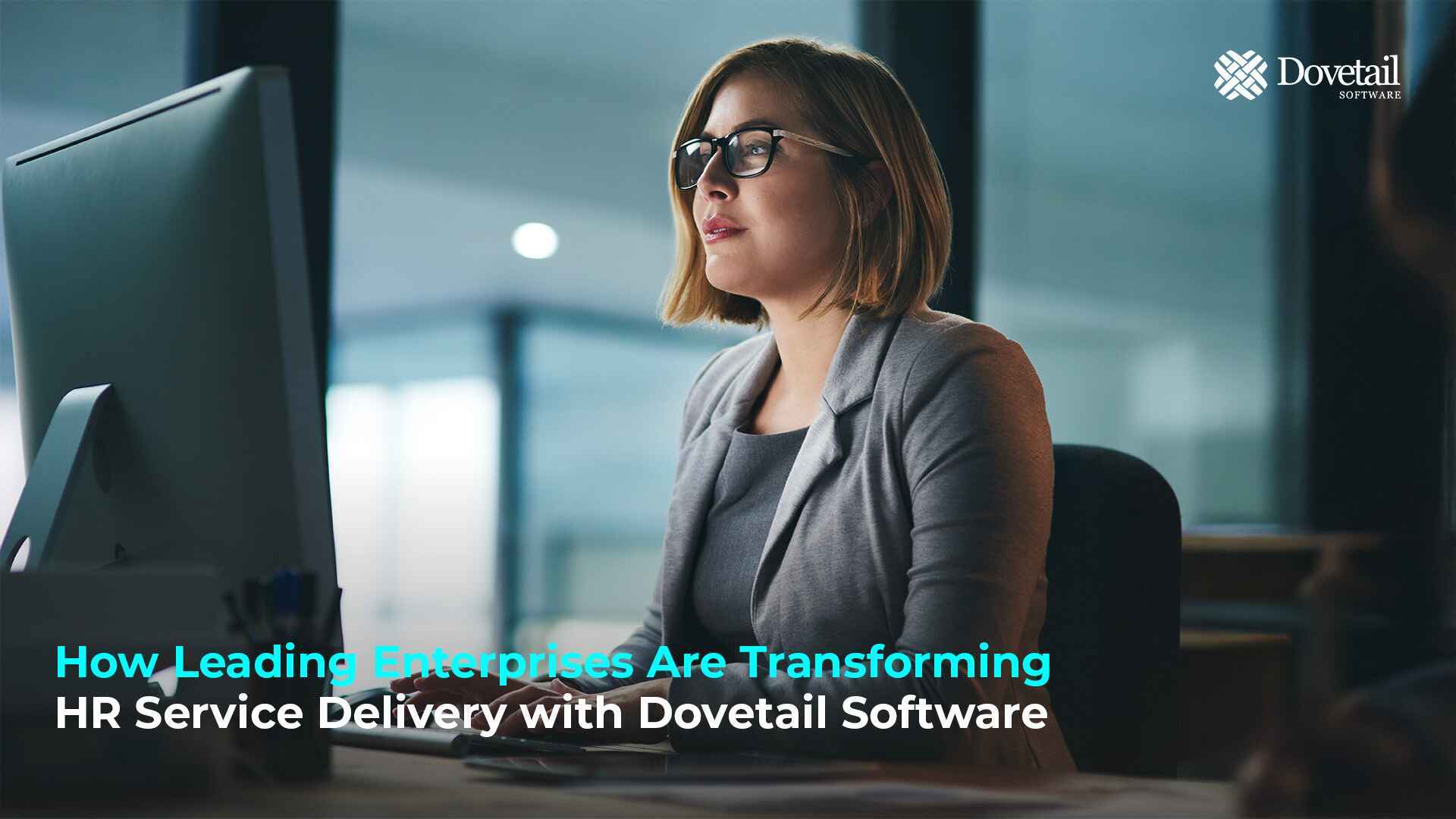Modern HR Service Delivery replaces fragmented, inbox-based support with a unified, tech-enabled framework built on five pillars: HR Case Management, an Employee Portal, an HR Knowledge Base, Live Chat, and an AI Copilot. This model enables self-service, enforces SLAs, automates workflows, and generates actionable insights. According to McKinsey:
“Companies that restructure their operating models and invest in digital capabilities can achieve sustainable cost reductions of 20 to 40 percent.”
In HR, this translates to faster service, lower ticket volumes, and improved employee satisfaction—as demonstrated by Danone US of Dovetail Software in their 2023 rollout. This guide explores each pillar, quantifies impact, and outlines a phased implementation roadmap.
1 | Why HR Service Delivery Matters
- Employees expect DIY help. 71 % of U.S. workers want self-service for HR, benefits and payroll tasks (Voice of the Workforce 2023-2024).
- HR wants to focus on strategic work. Modern service models deflect repetitive questions and free HR staff for higher-value tasks such as talent strategy, leadership coaching, and employee relations.
- Budgets demand efficiency. Automation can lower HR Service Delivery costs by 30–50 percent (McKinsey Insight 2024). Organizations report up to 47 percent lower HR operating costs after adopting a modern service model (KPMG Pulse 2024).
- AI is accelerating. Eighty-five percent of service leaders plan Gen-AI pilots by 2025 (Gartner 2024).
- Service analytics unlock continuous improvement. A mature HR Service Delivery platform surfaces top issues, trending themes, and knowledge gaps. This data supports content refinement, workflow optimization, and better workforce planning.
- Self-service improves consistency and compliance. Standardized workflows and curated knowledge reduce the risk of conflicting advice, support legal defensibility, and help ensure process adherence—especially under frameworks like GDPR.
- Employee experience is a competitive advantage. Fast, helpful HR service improves engagement, reduces frustration, and strengthens trust.
2 | Five Core Components of Modern HR Service Delivery
- HR Case Management. Centralizes every employee inquiry, applies automated routing and SLA timers, and maintains a full audit trail for compliance and analytics.
- Employee Portal. Delivers a 24 / 7 self-service hub where employees can search knowledge, access forms, and submit or track cases in one place.
- HR Knowledge Base. Provides curated, searchable articles designed to deflect 40–70 % of routine questions, ensuring consistent answers across the workforce.
- Live Chat. Offers real-time assistance inside the portal; unresolved chats auto-convert to tracked cases so context is never lost.
- AI Copilot. Acts as a conversational assistant trained on verified HR content, resolving most Tier-0 and Tier-1 inquiries and escalating complex issues with full context.
3 | Phased Implementation Roadmap
- Phase 1 – Secure Sponsorship
Build an ROI case; set targets such as responding to 95 percent of tickets within one business day. - Phase 2 – Streamline Processes
Map current workflows, remove redundancies, and standardizes forms - Phase 3 – Pilot and Iterate
Launch the Employee Portal and HR Knowledge Base to one unit; track adoption and deflection. - Phase 4 – Deploy AI Copilot
Train on verified content; configure safe escalation to HR agents. - Phase 5 – Add Live Chat
Extend self-service enterprise-wide, then activate real-time chat. - Phase 6 – Monitor and Optimize
Review metrics monthly; refine content, workflows, and AI intents.
4 | Metrics That Matter
- First-Contact Resolution
Measures the percentage of employee inquiries solved in the very first interaction - no hand-offs or follow-ups required. Higher FCR indicates streamlined workflows, accurate knowledge, and a better employee experience. - Average Resolution Time
Tracks the elapsed time from case creation to closure, across all channels. Shorter resolution times reveal efficient routing, well-defined SLAs, and empowered HR agents. - Deflection Rate
Calculates how many questions are answered by self-service resources—knowledge articles, portal, or AI Copilot—before reaching an HR agent. A rising deflection rate reduces ticket volume and frees HR staff for higher-value work. - Portal Adoption
Shows the percentage of employees who choose the self-service portal over email or phone to seek HR help. High adoption signals strong user awareness, intuitive design, and trust in the portal’s answers. - User Satisfaction
Captures employee feedback after an interaction, often via CSAT or thumbs-up ratings. Consistently high scores reflect clear communication, timely resolutions, and a positive service experience. - Knowledge Accuracy
Monitors how often employees or agents mark an article as correct, helpful, and up-to-date. High accuracy underscores reliable content governance; low scores flag articles that need revision or expansion.
5 | Case Snapshot – Danone US
- Platform Roll-out
Danone US launched Dovetail’s Employee Portal (“Genie”), HR Case Management and Knowledge Base to 2,000 corporate employees, with phase 2 slated for 4,000 manufacturing staff. The portal opened with 735 curated articles and a consumer-grade UX. - Employee Engagement & Feedback
In the first month Genie logged 900+ employee sign-ins, and surveys showed near-100 % positive feedback from employees and HR users alike. - Operational Shift
During the initial weeks, 1,964 cases were created; 636 were self-service cases filed directly by employees, proving rapid adoption of Tier 0 support and reducing manual inbox triage. - Analytics-Driven Improvement
Real-time dashboards now surface top inquiry themes and knowledge gaps, sparking a “continual improvement” mindset across HR Shared Services and giving leaders actionable service data.
6 | Checklist for Success
- Secure executive buy-in & define ROI
Build a data-backed business case that links cost reduction, service KPIs, and employee-experience gains to company goals. Executive sponsorship accelerates funding decisions and clears roadblocks during rollout. - Discovery & Design
Dovetail consultants capture objectives, success criteria, and process maps in a Lean Six Sigma discovery workshop, creating a detailed requirements blueprint. - Build
The joint team iteratively configures case categories, SLAs, portal branding, and knowledge hierarchy, using a “build-verify-adjust” cycle for rapid feedback. - Test & Training
HR power-users validate every workflow and SLA in a customer-specific environment, while Dovetail delivers role-based training for admins, agents, and knowledge authors. - Launch & Hypercare
After final readiness checks, the solution goes live for employees; a 30-day Hypercare window gives HR direct access to Dovetail experts for swift issue resolution. - Ongoing Support & Continuous Improvement
Post-Hypercare, Dovetail’s Customer Support and Customer Success teams provide enhancements, integration advice, and quarterly service reviews, turning analytics into iterative workflow and content updates.
Conclusion
A modern HR Service Delivery framework anchored by HR Case Management, an Employee Portal, an HR Knowledge Base, Live Chat, and an AI Copilot enables faster resolutions, consistent answers, and data-driven HR leadership. Following this roadmap, HR teams can cut costs, elevate employee experience, and focus on strategic initiatives that drive business success.
Frequently Asked Questions (FAQ)
- What is HR Service Delivery?
HR Service Delivery is a structured, technology-enabled model that centralizes employee inquiries, automates workflows, and delivers self-service through case management, an employee portal, a knowledge base, live chat, and an AI Copilot. - Why move from shared inboxes to case management?
Shared inboxes lack SLA tracking, audit trails, and analytics. HR case management enforces routing rules, monitors resolution times, and provides data for continuous improvement. - How much can HR Service Delivery reduce costs?
Organizations adopting a modern model typically see double-digit savings thanks to self-service deflection and workflow automation. - What questions can an AI Copilot resolve?
Tier-0 and Tier-1 inquiries—policy look-ups, leave balances, how-to steps—often up to 80 % of overall volume. Complex issues escalate to HR with full context. - Does an employee portal replace HR staff?
No. It deflects repetitive questions so HR teams can focus on higher-value work such as strategic projects, employee relations, and talent initiatives. - How long does implementation take?
A phased rollout—portal + knowledge pilot first—can deliver value in 8-12 weeks, with live chat and AI Copilot added once content is validated. - Which KPIs prove success?
First-Contact Resolution, Average Resolution Time, Deflection Rate, Portal Adoption, Employee Satisfaction (CSAT), and Knowledge Accuracy. - Is employee data kept secure?
HR-first platforms enforce role-based permissions, regional data residency, and audit trails to meet GDPR and similar privacy regulations.
Glossary of Key Terms
-
AI Copilot – A conversational assistant trained on verified HR knowledge that resolves routine inquiries and routes complex cases with full context.
-
Case Deflection – Percentage of inquiries answered by knowledge, portal, or AI without HR-agent involvement.
-
Case Management – A system that logs, routes, and tracks every HR inquiry with SLA timers and audit history.
-
Employee Portal – A 24/7 self-service hub where employees access articles, forms, and submit tickets.
-
First-Contact Resolution (FCR) – The share of cases closed on the initial interaction, without hand-offs.
-
Knowledge Accuracy Score – Metric reflecting employee feedback on whether an article was correct and helpful.
-
Live Chat – Real-time messaging that converts to a tracked case if follow-up is required.
-
Service-Level Agreement (SLA) – Pre-defined response or resolution targets (e.g., 95 % within 24 hours).
-
Tier 0 (Self-Service) – Automated resources such as the knowledge base, FAQ, employee portal, and AI Copilot that let users resolve issues without human intervention.
-
Tier 1 (Generalist Support) – Front-line HR service agents handling high-volume, low-complexity questions; escalate issues they can’t resolve within defined scripts or SLAs.
-
Tier 2 (Subject-Matter Specialists) – HR domain experts (benefits, payroll, leave, HRIS) who handle more complex or policy-sensitive cases escalated from Tier 1.
-
Tier 3 (Expert / Legal & Compliance) – Senior HR leaders, employee-relations specialists, or legal/compliance teams who resolve rare, high-risk, or precedent-setting cases and feed outcomes back into lower tiers for future deflection.
- Workflow Automation – Rules or no-code flows that auto-assign tasks, send notifications, and update case status without manual effort.


























.jpg?width=880&height=495&name=HRSD%20GUIDE%20(2).jpg)


